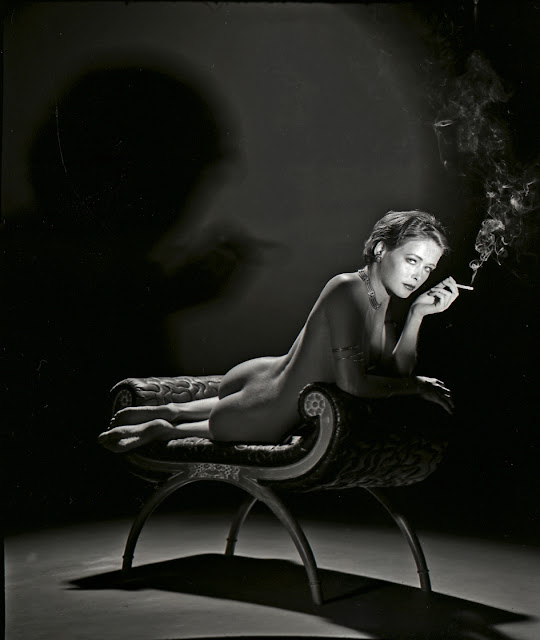Revisiting Kate Davitt & George Hurrell
Tuesday, November 12, 2019
Quite a few people were impressed by this recent re-blog and this one. I will attempt to explain the reason, which may have to do something that this sort of photography is not seen much anymore.
My friend
designer/illustrator, artist Ian Bateson whom I have known since 1977 has been
a sort of sounding board for what I do. More often than not when I would show
him a photograph that I had taken recently and was proud of he would say, “It’s
been done before.” This irked me for many years until one day like Paul on the
way to Damascus I saw the light but unlike the saint I was not temporarily made
blind, I told (I think I shouted it out) Bateson, “But I haven’t done it yet!”
Now Bateson
takes that all back and is a tad apologetic. We both understand that there is
nothing new. Every piece of art has a model/precursor of it from a distant or recent pass.
Perhaps the cave dwellers who carved those amusing little statues of fat naked
women were the only truly originals.
In that
past century without Google or the internet, reference to art or anything human
was to be found in libraries or in bookstores. This meant that many of us (or
at least this one) amassed a huge collection of photography and art books. Two
of my most treasured are the photographs of Philippe Halsman (the most famous
Latvian photographer) and those of Hollywood-large-camera-man, George Hurrell.
The later inspired me to look for the works of other Hollywood photographers.
The
inspiration led me to in the mid 80s to shoot magazine portraits using the
complex lighting of those mostly Californian masters. Central to any of those
photographs were three elements. One of them was a focusing spotlight. I was able to buy a
cheap one from Angy at Beau Photo. He came up to me one day and showed me the
device and asked me if I would want it. With some modifications I was able to
fit it to my studio flash lights.
 |
| Karen Campbell |
The second
but very important element was an overhead boom light that would point
downwards. Particularly if your subject was a woman you wanted a hard shadow
underneath the nose that was close but never touched her lips.
Because
that light resulted in no catch lights in their eyes a small (and low power)
light right next to my camera (on a tripod) and at eyelevel would produce those
catch lights that would bring life to the portrait.
 |
| Madeleine Morris |
The diet
photographs for Vancouver Magazine were almost my last hurrah. For the
photographs of Carla Temple it involved massive manhandling of cardboard and wood
Greek columns I borrowed from the CBC.
It would
seem to me that in this century that kind of photography is going the way of
good daily newspapers.
 |
| Emma Slipp |







